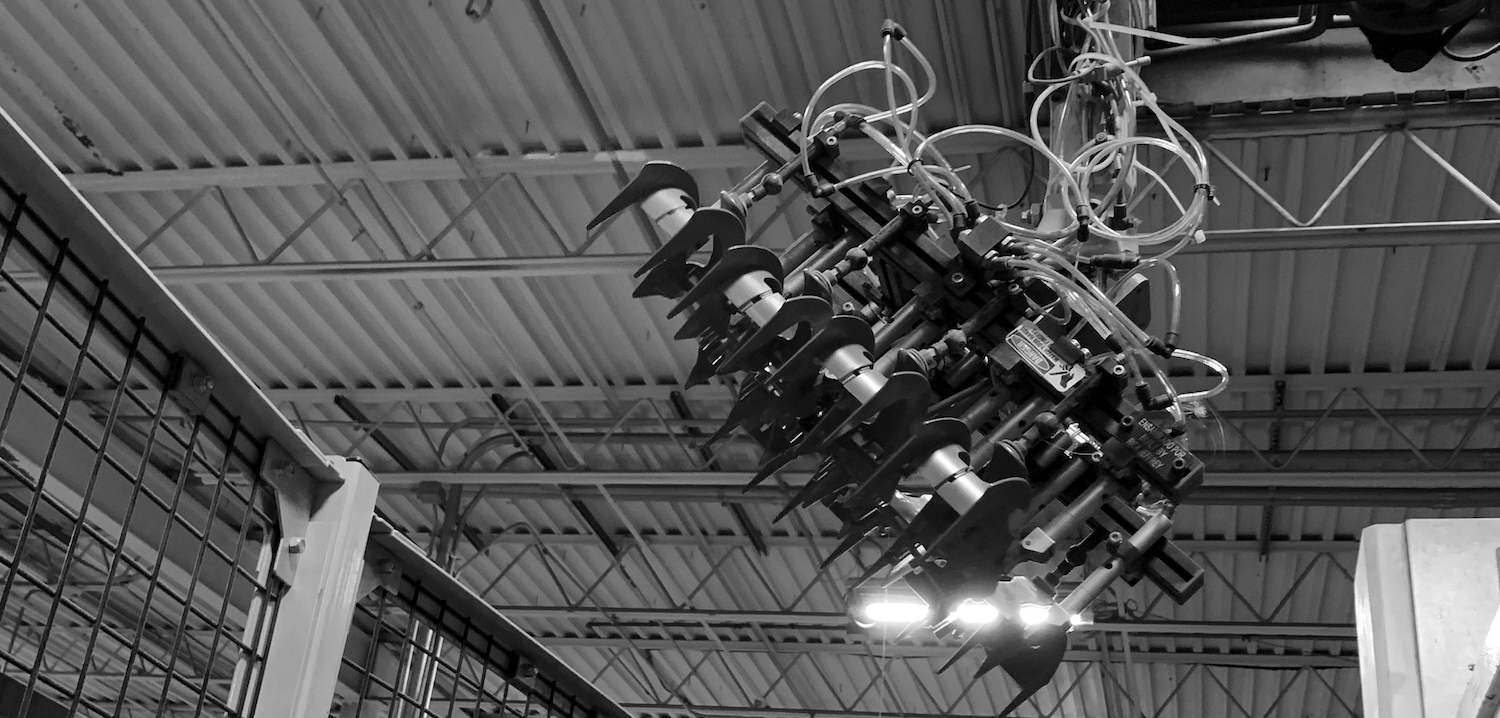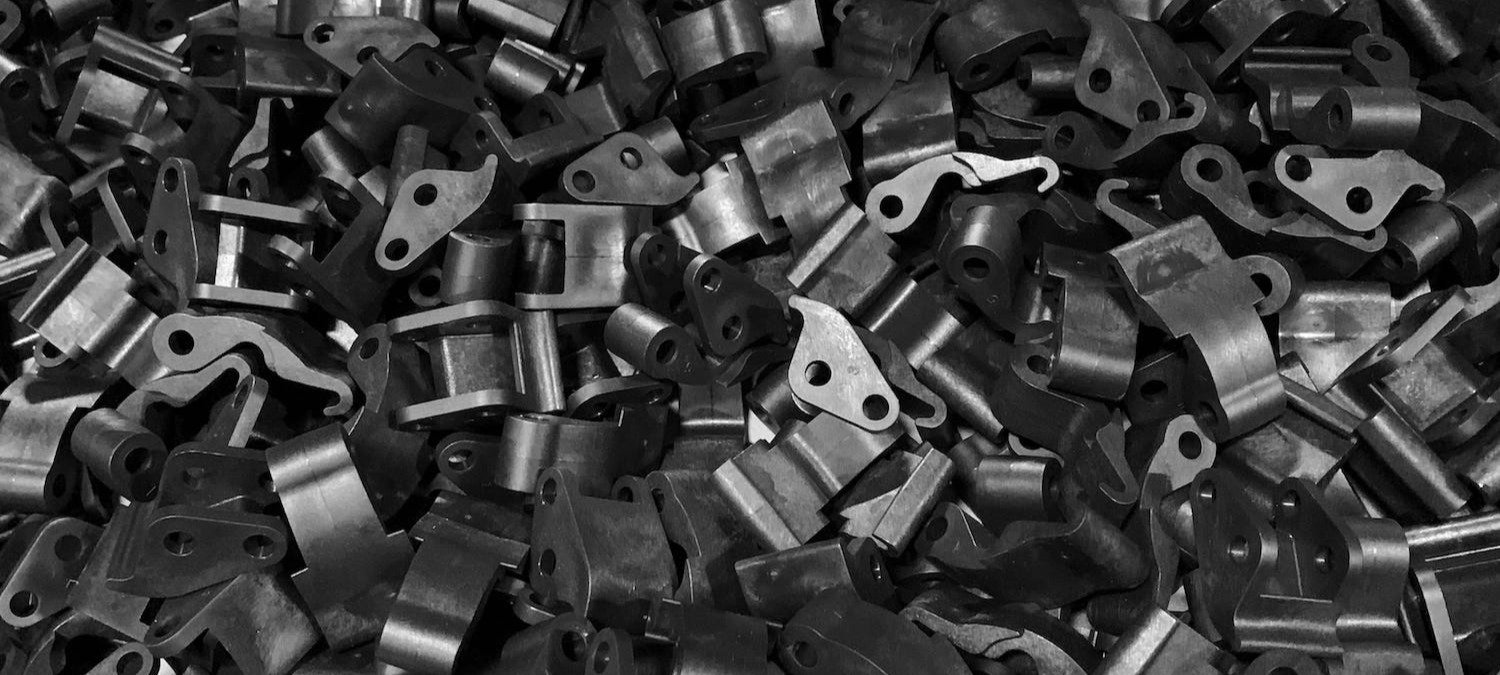We get a common question from potential clients: “How much does injection molding cost?” This is an important thing to consider as you map out your budget for a project – however, the answer to this question isn’t straightforward, as several factors come into play.
Join us as we break down the key components influencing injection molding costs and offer insights on optimizing your budget without sacrificing quality.
What Influences Injection Molding Costs?
Injection molding costs vary based on several critical factors, each contributing to the overall expense. Understanding these factors can help you plan your project and make informed decisions.
-
Tooling and mold creation
-
Production volume
-
Part complexity
Let’s dive deeper into each of these areas:
Factor #1: Tooling Costs and Mold Creation
Tooling, or mold creation, often represents the most significant upfront cost in an injection molding project. The mold’s complexity, size, and material impact this expense.
In this process, we consider the following to calculate costs for the project:
-
Material of the Mold: Aluminum molds are cheaper but may wear out faster. In contrast, steel molds are more durable and can handle higher volumes.
-
Mold Complexity: Complex molds with intricate details, multiple cavities, or moving parts will cost more to produce.
-
Lifespan: Investing in a high-quality mold can reduce costs over time by minimizing maintenance and ensuring a longer lifespan.
Though tooling costs can seem high, they are typically amortized over the production run, making them more economical for large-scale projects.
Factor #2: Material Costs and Finding the Right Plastic
The type of plastic you choose significantly affects your project’s cost.
-
Commodity Plastics: Common and affordable options like polypropylene (PP) and high-impact polystyrene (HIPS) are ideal for cost-sensitive projects.
- Engineering-Grade Plastics: Materials like ABS, PEEK, and nylon offer enhanced performance, such as higher heat resistance or improved mechanical properties, but come at a higher price.
Selecting the right material involves balancing cost with performance requirements, and that’s where our expertise comes in.
Factor #3: Production Volume
Production volume plays a crucial role in determining per-unit costs. Low-volume production is ideal for prototyping or custom parts, but higher per-unit costs due to the limited number of parts produced. Conversely, high-volume production the more parts you produce, the lower your per-unit cost. Larger production runs spread tooling and setup costs over more units, maximizing efficiency.
Factor #4: Design Complexity and Additional Features
The complexity of your part’s design directly impacts cost. Intricate geometries, tight tolerances, and specific surface finishes may require advanced tooling and longer production times.
Additionally, secondary operations like assembly, finishing, or post-molding treatments can add to the overall expense.
Hidden Injection Molding Costs to Consider
Beyond the direct cost drivers discussed above, it is crucial to consider less obvious factors that may be baked into the cost of an injection molding project. For example, secondary post-molding operations like assembly, finishing, and packaging will add to the project cost.
More broadly, any injection molding operation will ultimately have to pass along its overhead expenses, including energy, labor, and facility maintenance. While these costs may not appear on the invoice, working with an efficient, forward-thinking injection molder is ultimately an important contributor to cost reduction.
Finally, lead times and supply chain costs are crucial factors to consider. A small marginal cost savings can result in far greater lost revenue if it leads to a lost market opportunity, inflated transportation costs, or a less reliable supply chain.
Cost-Saving Strategies in Injection Molding
To maximize your budget, consider these cost-saving strategies:
Optimize Part Design for Manufacturability (DFM)
One of the most effective ways to reduce injection molding costs is through Design for Manufacturability (DFM). This process simplifies your part design to minimize production challenges and maximize efficiency.
-
Reduce Complexity: Simplify intricate geometries, eliminate unnecessary features, and aim for consistent wall thickness to reduce the need for specialized tooling or secondary operations.
-
Avoid Undercuts: Redesign parts to eliminate undercuts or complex features that require additional mold components, such as side actions or lifters, which can drive up tooling costs.
- Integrate Features: Consider combining multiple parts into a single mold design to reduce assembly costs and production time.
By optimizing your design, you can streamline the manufacturing process, reduce tooling complexity, and improve cycle times, all of which contribute to significant cost savings.
Choose the Right Material
Selecting a suitable plastic material for your project is a balancing act between cost and performance.
-
Evaluate Performance Needs: Determine the necessary mechanical, thermal, and chemical properties required for your part. For example, commodity plastics like polypropylene (PP) or polyethylene (PE) are cost-effective for less demanding applications, while engineering plastics like PEEK or ABS may be necessary for high-performance parts.
-
Consider Recycled or Blended Materials: For certain applications, using recycled or hybrid materials can reduce raw material costs without sacrificing quality.
- Minimize Waste: Work with your manufacturer to optimize material usage and reduce scrap, which can further cut costs.
By carefully selecting materials that meet your project’s requirements without exceeding them, you can avoid overspending on unnecessary performance features.
Partner with a Domestic Manufacturer
Partnering with a local injection molding company like Molding Dynamics can offer several financial and logistical advantages.
-
Reduced Shipping Costs and Lead Times: Domestic production eliminates the need for long-distance shipping and the associated costs. Additionally, shorter lead times mean faster delivery and more flexibility to meet changing demand. If you currently have production overseas, you may also want to consider reshoring.
-
Improved Communication: Working with a local partner allows for clearer, more timely communication. This can prevent costly errors and ensure any design or production issues are resolved quickly.
-
Enhanced Quality Control
: Domestic manufacturers are often subject to stricter quality and compliance standards, ensuring higher consistency and fewer defects in your final products.
These benefits help you maintain greater control over your production process and reduce the risk of unexpected costs, such as delayed shipments or quality issues.
Future Trends in Injection Molding Costs
In our work with plastic injection molding clients across a variety of industries, we have noticed a sharp increase in the demand for parts made using recycled materials. While we are typically able to accommodate this need using a range of post-industrial (and increasingly post-consumer) materials, the underlying costs have shifted alongside the recent growth in sustainability concerns.
In many ways, the plastic injection molding industry was one of the original industries to offer more sustainable, recycling-based manufacturing options. Scrap plastics have been widely available for decades; in the past, they offered a lower-cost alternative. Today, with increased demand for recycled materials, these materials often command a price premium compared to newly manufactured materials.
How Molding Dynamics Helped One Client Dramatically Reduce Production Cycle Times
When one telecom industry client presented a new fiber optics equipment part design to Molding Dynamics, our team quickly spotted some serious manufacturability issues. In this case, the design employed 86 different nuts and bolts, each one requiring manual assembly and increasing cycle times.
Molding Dynamics worked with the client to understand the part’s requirements. Our analysis suggested that the design would perform as intended with a dramatically reduced number of pop rivets. This change reduced the cycle time for this project from about one day per part to about ten minutes.
A Trusted Supplier is the Best Way to Control Costs
At Molding Dynamics, we understand that every project is unique, and we work closely with our clients to deliver high-quality parts at competitive costs. From material selection to tooling and production, we’re here to guide you every step of the way.
Ready to start your next injection molding project?
Understanding the factors that influence injection molding costs is the first step toward making informed decisions. Whether you’re producing a prototype or gearing up for large-scale production, Molding Dynamics can help you achieve your goals efficiently and cost-effectively.
Contact us today to discuss your project and get a detailed quote!






